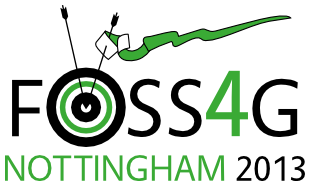Presentation
The Importance Of Open Source Geospatial Labs In Widening Geospatial Education Worldwide
Suchith Anand (University of Nottingham) with Charlie Schweik (University of Massachusetts), Helena Mitasova (North Carolina State University)
15:00 on Friday 20th September (in Session 37, starting at 2 p.m., Auditorium)
Show in Timetable
The importance of Open Source Geospatial Labs in widening Geospatial education worldwide Suchith Anand, University of Nottingham, UK Charlie Schweik, University of Massachusetts, Amherst, USA Helena Mitasova, North Carolina State University Maria Antonia Brovelli, Politecnico di Milano, Italy Serena Cotezee, University of Pretoria, South Africa Phil Davis, GeoTech Center, Delmar College, USA Patrick Hogan, NASA, USA Raphael Moreno, University of Colorado, Denver, USA Jeremy Morley, University of Nottingham, UK Although there has been tremendous growth in geospatial science over the last decade, the number of universities offering teaching in geospatial science in developing countries is very low. There are number of factors for this including high cost of software, lack of trained staff etc. But with the advent and maturity of free and open source geospatial software many universities in developing countries across the world will be establishing courses in geospatial science in the next few years. It was with this bigger mission in mind that in Sep 2011, the Open Source Geospatial Foundation (OSGeo) and the International Cartographic Association (ICA) signed an MoU with the aim of developing on a global basis collaboration opportunities for academia, industry and government organizations in open source GIS software and data. Within a span of one year, we now have established labs across the planet in 6 continents . We have now grown to 20 research labs across the world (6 in Europe, 3 in North America, 3 in South America, 4 in Asia, 3 in Africa and 1 in Australia). The three main aims of the ICA-OSGeo Lab Network are to provide expertise and support for the establishment of Open Source Geospatial Laboratories and Research Centers across the world for supporting development of open-source geospatial software technologies, training and expertise ; to provide support for building-up and supporting development of open source GIS training materials; to enable development of collaboration opportunities for academia, industry and government organizations in open source GIS for the purpose of creating a sustainable ecosystem for open source GIS globally. The availability of free and open source GIS will make possible for large number of universities especially in developing countries to also start courses in geospatial science. This will in true sense bring down the entry barrier for many students especially in developing countries to learn GIS. The OSGeo.org’s education and curriculum committee has a significant history of collaboration and established significant social capital among the network of participants. but up until now, we have only been able to achieve collaboration in the form of individual posts of metadata and links to educational material [2]. With the emergence of this lab network model, coupled with the right incentives, we are confident that this network can do more collectively on the education front, and we have not yet formed closer collaborative ties in the area of open geospatial application and research. Recently the authors listed above have been collaborating on a grant proposal to establish a new effort for this open geospatial lab network that mimics open source software collaboration and that includes three key components: (1) a coordinated teaching program; (2) a repository and a system for the management of new derivatives; and (3) a organized cross-node research program focusing on applications of open geospatial technologies to support local governance and management in several key environmental management areas. In this presentation, we will describe elements of this proposal, partly in an effort to encourage others at FOSS4G to consider joining in the effort, and to solicit other collaborative ideas from the audience.
